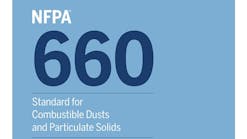EPA’s risk assement to focus on widely used flame retardants
The U.S. Environmental Protection Agency (EPA) announced it will begin assessments on 23 commonly used chemicals, with a specific focus on flame retardant chemicals, in order to more fully understand any potential risks to people’s health and the environment. This effort is part of the Toxic Substances Control Act (TSCA) Work Plan, which identifies commonly used chemicals for risk assessment.
Americans are often exposed to flame retardant chemicals in their daily lives. Flame retardants are widely used in products such as household furniture, textiles and electronic equipment. Some flame retardant chemicals can persist in the environment, bioaccumulate in people and animals and have been shown to cause neurological developmental effects in animals, according to EPA.
“EPA is committed to more fully understanding the potential risks of flame retardant chemicals, taking action if warranted and identifying safer substitutes when possible,” said James J. Jones, Acting assistant administrator for the Office of Chemical Safety and Pollution Prevention. “Though today’s announcement represents a significant step forward on chemical safety, it’s important to remember that TSCA, this country’s chemicals management legislation, remains in dire need of reform in order to ensure that all Americans are protected from toxic chemicals in their environment.”
RELATED: EPA identifies substitutes for toxic flame retardant
EPA will begin evaluating 20 flame retardant chemicals, conducting full risk assessments for four of the flame retardants, three of which are on the TSCA Work Plan, and one that was the subject of an Action Plan development under TSCA. In addition, tagency is assessing eight other flame retardants by grouping flame retardants with similar characteristics together with the chemicals targeted for full assessment. EPA will use the information from these assessments to better understand the other chemicals in the group, which currently lack sufficient data for a full risk assessment.
EPA will also begin analyzing how eight of the 20 flame retardant chemicals transform and move in the environment. These chemicals were selected because they are likely to persist in the environment, bioaccumulate in people and/or have high exposure potential, but there are not adequate data to conduct full risk assessments.
During its review of data on flame retardant chemicals in commerce, EPA also identified approximately 50 flame retardant chemicals that are unlikely to pose a risk to human health, making them possible substitutes for more toxic flame retardant chemicals.
As EPA develops its draft risk assessments, the agency will use information that is available through a wide range of publicly available data sources. EPA also encourages submission of additional relevant information on these chemicals, such as unpublished studies and information on uses and potential exposures. This information should be submitted by May 30, 2013, to ensure that it is included in the agency’s review.



